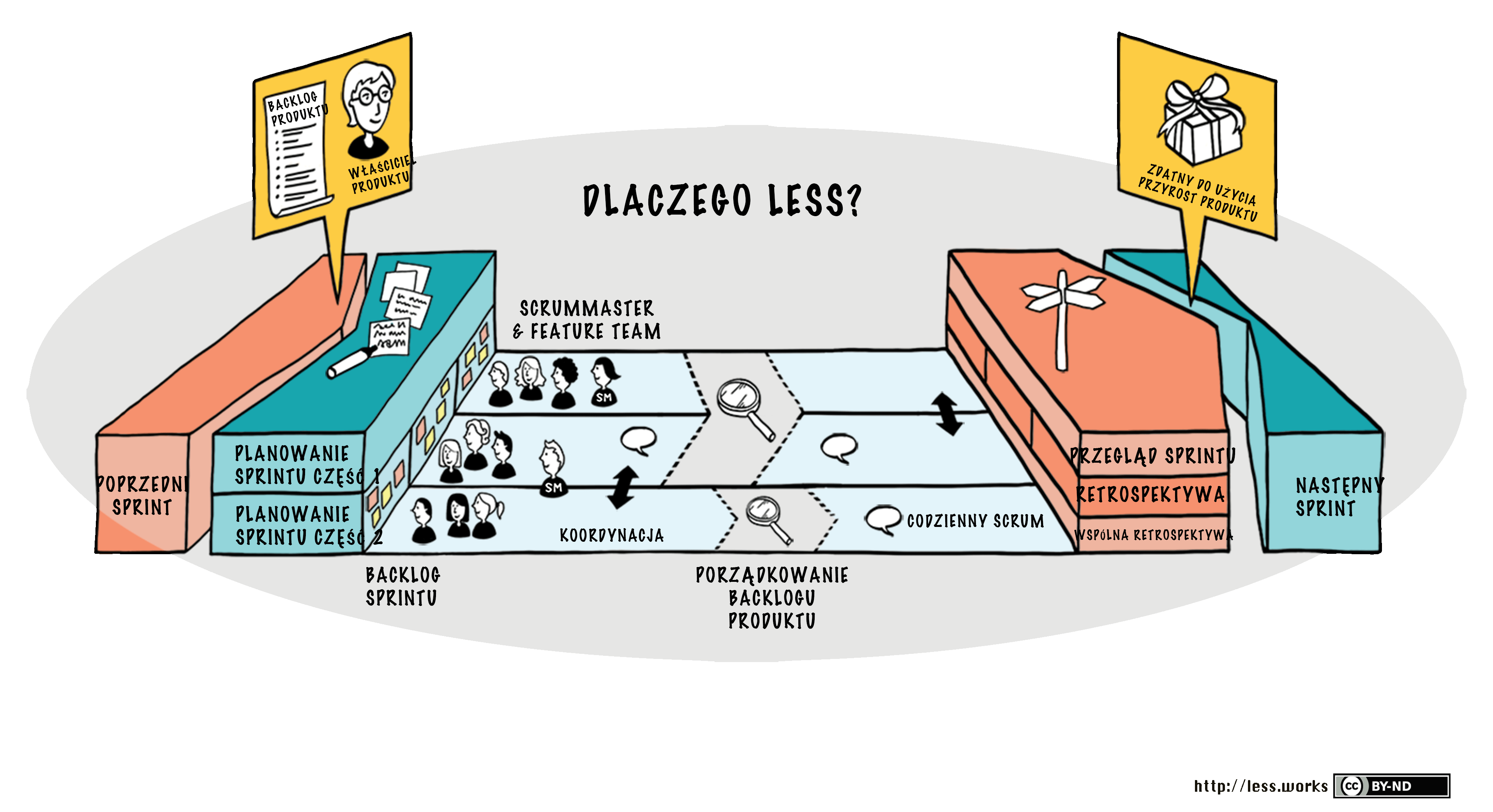LeSS Framework
Scaling Scrum starts with understanding standard one-team Scrum. From that point, your organization must be able to understand and adopt LeSS, which requires examining the purpose of one-team Scrum elements and figuring out how to reach the same purpose while staying within the constraints of the standard Scrum rules.
Agile development with Scrum requires a deep organizational change to become agile. Therefore, neither Scrum nor LeSS should be considered as merely a practice. Rather, they form an organizational design framework.
Two Agile Scaling Frameworks
LeSS provides two different large-scale Scrum frameworks. Most of the scaling elements of LeSS are focused on directing the attention of all of the teams onto the whole product instead of “my part.” Global and “end-to-end” focus are perhaps the dominant problems to solve in scaling. The two frameworks – which are basically single-team Scrum scaled up – are:
- LeSS: Up to eight teams (of eight people each).
- LeSS Huge: Up to a few thousand people on one product.
What does it mean to be the same as One-Team Scrum?
LeSS is a scaled up version of one-team Scrum, and it maintains many of the practices and ideas of one-team Scrum. In LeSS, you will find:
- a single Product Backlog (because it’s for a product, not a team),
- one Definition of Done for all teams,
- one Potentially Shippable Product Increment at the end of each Sprint,
- one Product Owner,
- many complete, cross-functional teams (with no single-specialist teams),
- one Sprint.
In LeSS all Teams are in a common Sprint to deliver a common shippable product, every Sprint.
What’s Different in LeSS?
- Sprint Planning Part 1: In addition to the one Product Owner, it includes people from all teams. Let team members self-manage to decide their division of Product Backlog Items. Team members also discuss opportunities to find shared work and cooperate, especially for related items.
- Sprint Planning Part 2: This is held independently (and usually in parallel) by each Team, though sometimes for simple coordination and learning two or more Teams may hold it in the same room (in different areas).
- Daily Scrum: This is also held independently by each Team, though a member of Team A may observe Team B’s Daily Scrum, to increase information sharing.
- Coordination: Just Talk, Communicate in Code, Travelers, Open Space, and Communities.
- Overall PBR: There may be an optional and short overall Product Backlog Refinement (PBR) meeting that includes the one Product Owner and people from all teams. The key purpose is to decide which teams are likely to implement which items and therefore select those items for later in-depth single-team PBR. It is also a chance to increase alignment with the Product Owner and all teams.
- Product Backlog Refinement: The only requirement in LeSS is single-team PBR, the same as in one-team Scrum. But a common and useful variation is multi-team PBR, where two or more Teams are in the same room together, to increase learning and coordination.
- Sprint Review: In addition to the one Product Owner, it includes people from all teams, and relevant customers/users and other stakeholders. For the phase of inspecting the product increment and new items, consider a “bazaar” or “science fair” style: a large room with multiple areas, each staffed by team members, where the items developed by teams are shown and discussed.
- Overall Retrospective: This is a new meeting not found in one-team Scrum, and its purpose is to explore improving the overall system, rather than focusing on one Team. The maximum duration is 45 minutes per week of Sprint. It includes the Product Owner, Scrum Masters, and rotating representatives from each Team.

